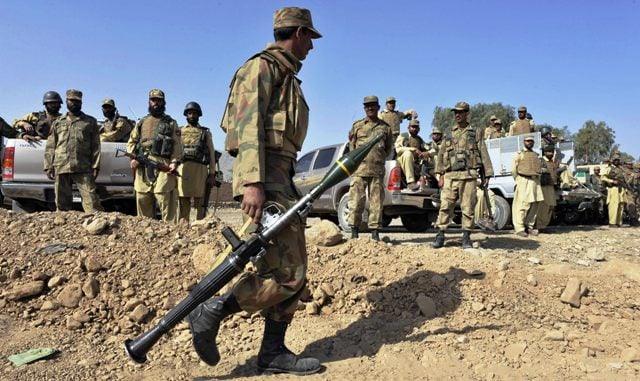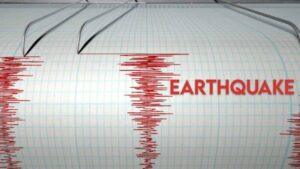With at least 685 deaths and 444 terrorist attacks suffered, 2024 turned out to be the deadliest year for Pakistan’s military and civilian security forces in a decade.
Equally alarming were the accumulated losses of civilians and security personnel, that is, 1,612 fatalities, which represents more than 63% of the total recorded this year and represents 73% more losses compared to the 934 outlaws eliminated.
The total number of deaths recorded this year was a nine-year high and more than 66% higher than in 2023. On average, nearly seven lives were lost daily, with November emerging as the deadliest month across all metrics, compared to all other months of the year. year.
The violence took the highest toll in Khyber-Pakhtunkhwa, which led the human loss with 1,616 deaths, followed by Balochistan with 782 deaths.
Key findings of the Annual Security Report 2024 issued by the Center for Research and Security Studies (CRSS), Pakistan.
general toll
In 2024, Pakistan suffered 2,546 violence-related deaths and 2,267 injuries among civilians, security personnel and outlaws. This casualty count is due to 1,166 incidents of terrorist attacks and counter-terrorism operations, marking a grim year for the country’s security outlook.
Comparison with 2023
Compared to last year, these figures show: i) an increase of more than 66% in violence (2,546 compared to 1,533 deaths), ii) more than 55% more injuries (2,267 compared to 1,462) and iii) around 49% more incidents (1,166 vs. 784).
Regional Impact | k–P and Balochistan – Provinces on the battlefield
KP and Balochistan accounted for 94% of all deaths and 89% of all incidents across the country. Although KP suffered the most deaths (over 63%) recorded this year, followed by Balochistan (31%), the largest increase in violence, compared to last year, was recorded in the latter province (90%). , followed by the first. (65%), and does not take into account the 260% increase in Islamabad, as the number of deaths is still very low in comparison (26).

The deadliest month
November was the deadliest month across all metrics; with the highest number of attacks (125), deaths (450) and injuries (625) recorded compared to all other months of the year.
Changing trends throughout the decade
Deaths recorded this year mark a nine-year record, surpassing the 2016 level (2,432) and the highest since 2015 (4,366).
Additionally, data collected over the past 10 years shows a marked downward trend from 2015 to 2020, with deaths declining each year by around 33% on average. This six-year decline and indeed an encouraging trend in Pakistan’s security landscape, was followed by a resurgence in 2021. This is evident from the fact that violence in Pakistan increased steadily with a peak of 38% in 2021, from 15% in 2022, 56% in 2023 and 66% in 2024 (almost a 44% annual increase in violence on average since 2021).

District-level perspectives | Hotspots in KP and Balochistan
The highest number of violence and counter-violence related deaths were recorded in the newly merged KP districts bordering Afghanistan such as Kurram, North Waziristan, Khyber; Other KP districts with significant deaths were Dera Ismail Khan, Bannu and Lakki Marwat. These districts were followed by Quetta, Kech, Kalat and Musakhail districts in Balochistan.
Furthermore, deaths in these most severely affected districts of Balochistan in 2024 alone were almost equal to the combined total recorded during the previous three years (2021-2023), while a similar trend was observed in the most affected districts of KP.
Deaths of civilians, security forces and outlaws | Alarming disparities
In 2024, an alarming disparity was observed between:
i) deaths of civilians and security personnel against outlaws:
Of the 934 bandits eliminated, civilians and security personnel suffered 1,612 deaths, representing almost 73% more losses compared to bandits. Their combined losses accounted for over 63% of all deaths compared to the outlaws who accounted for 37% of the total losses recorded this year.
ii) number of terrorist attacks against civilians and security forces versus anti-terrorist operations against outlaws:
Terrorist attacks against security officials and civilians outnumbered security operations carried out against outlaws almost four times, i.e. 909 terrorist attacks against 257 security operations.

Security forces under siege
In 2024, security force personnel also suffered the highest number of terrorist attacks and deaths in a decade, that is, 444 terrorist attacks and 685 deaths. This figure exceeds the level of 2015, where they suffered 298 attacks and 415 deaths, and is the highest since 2014 (543 terrorist attacks and 781 deaths).
The number of terrorist attacks against them and the resulting losses continued to decline from 2015 to 2020, for six consecutive years. Starting in 2021, there was a resurgence in both metrics that continued each successive year until the period analyzed.

Resurgence of militancy and insurgency
Historical data on deaths related to militancy and insurgency, similar to the previous trend on overall deaths, indicates a strong upward trend from 2021. Deaths resulting from militant attacks, after continuing to decline for 7 consecutive years (from 2014 to 2020) by an annual average of around 29%, increased each year from 2021 onwards to the period analyzed, by an average of 38%.
The downward trend in insurgency observed since 2014 also dramatically reversed in 2022: violence increased by 38% in 2022, 118% in 2023 and 192% in 2024 (an increase of 116% each year on average).
Sectarian violence
Sectarian violence in 2024 claimed 182 lives and left 234 injured. The majority of victims were Shiites, with 79 dead and 35 wounded, followed by Sunnis, who suffered 21 dead and 72 wounded. The incidents that affected Shiite and Sunni communities caused 79 deaths and 117 injuries. Furthermore, the violence claimed the lives of 2 Ahmadis and 1 Christian.
Historical data on sectarian violence against Shia and Sunni communities reveals a deeply worrying trend: between 2015 and 2020, sectarian violence claimed 467 lives. Alarmingly, this figure increased to 487 in the subsequent four years (2021-2024), underlining the growing nature of this threat and its growing impact on Pakistan’s security landscape.
Report from the Center for Research and Security Studies (CRSS)




